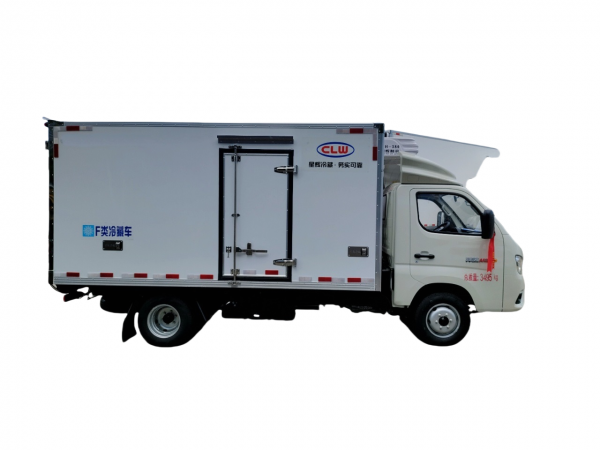Enhancing Crane Truck Operations with Driver Assistance Systems
Introduction:
Crane trucks play a crucial role in the construction and logistics industries, offering the flexibility to lift and transport heavy loads with precision and efficiency. However, operating a crane truck can be challenging due to the complex nature of the equipment and the potential risks involved. To address these challenges and improve safety and productivity, crane truck manufacturers have developed advanced driver assistance systems (ADAS) that provide operators with additional support and guidance during operations. In this article, we will explore the various driver assistance systems available for crane trucks and discuss their benefits in enhancing overall performance.
1. Overview of Crane Truck Driver Assistance Systems
1.1. Definition and Purpose of Driver Assistance Systems
Driver assistance systems for crane trucks are designed to assist operators in performing various tasks, such as load handling, positioning, and maneuvering, with greater ease and precision. These systems leverage advanced technologies, such as sensors, cameras, and software algorithms, to provide real-time feedback and alerts to the operator, helping them make informed decisions and avoid potential hazards.
1.2. Types of Driver Assistance Systems for Crane Trucks
There are several types of driver assistance systems available for crane trucks, each serving a specific purpose and providing unique functionalities. Some of the common systems include:
- Load Monitoring System: This system uses sensors to monitor the weight and distribution of the load, providing the operator with real-time information to ensure safe lifting and transport operations.
- Collision Warning System: Utilizing radar or lidar technology, this system detects obstacles or other vehicles in the crane truck's path and alerts the operator to prevent potential collisions.
- Stability Control System: By monitoring the crane truck's stability and center of gravity, this system helps prevent tip-overs and rollovers during lifting and maneuvering tasks.
- Camera Systems: Multiple cameras placed around the crane truck provide the operator with a 360-degree view of the surroundings, enhancing visibility and reducing blind spots.
- Remote Control System: Some crane trucks are equipped with remote control capabilities, allowing operators to control the crane from a safe distance, especially in hazardous environments.
2. Benefits of Driver Assistance Systems for Crane Trucks
2.1. Improved Safety
One of the primary benefits of driver assistance systems for crane trucks is the enhancement of safety for both the operator and the surrounding environment. By providing real-time alerts and feedback, these systems help operators avoid accidents, collisions, and other potential hazards during operations. The load monitoring system, for example, ensures that the crane truck does not exceed its weight capacity, reducing the risk of structural failures or accidents.
2.2. Increased Productivity
Driver assistance systems also contribute to increased productivity by streamlining operations and reducing downtime. The stability control system, for instance, helps operators perform lifting and positioning tasks more efficiently by maintaining the crane truck's stability and preventing delays caused by tip-overs or rollovers. Additionally, the remote control system enables operators to perform tasks more quickly and accurately, especially in tight or hard-to-reach spaces.

2.3. Enhanced Firefight truck emissions regulations and Convenience
With the help of driver assistance systems, crane truck operators can perform their tasks more comfortably and confidently. The camera systems provide a clear view of the surrounding area, reducing strain on the operator's neck and back caused by constant twisting and turning. The collision warning system alerts the operator to potential dangers, allowing them to focus on the task at hand without unnecessary distractions or stress.
3. Challenges and Limitations of Driver Assistance Systems for Crane Trucks
While driver assistance systems offer numerous benefits for crane truck operations, they also come with certain challenges and limitations that need to be considered. Some of the key challenges include:
- Cost: The installation and maintenance of driver assistance systems can be expensive, especially for small crane truck operators or companies with limited budgets.
- Training: Operators need to undergo thorough training to understand how to use and interpret the information provided by the driver assistance systems effectively.
- Reliability: The effectiveness of driver assistance systems may be impacted by external factors such as weather conditions, terrain, or equipment malfunctions.
4. Future Trends and Developments in Crane Truck Driver Assistance Systems
As technology continues to advance, we can expect to see further improvements and innovations in crane truck driver assistance systems. Some of the future trends and developments to watch out for include:
- Integration of Artificial Intelligence: AI-powered algorithms can enhance the capabilities of driver assistance systems by analyzing complex data patterns and predicting potential risks or issues in real time.
- Enhanced Connectivity: The integration of IoT (Internet of Things) technology can enable crane trucks to communicate with other vehicles, equipment, and infrastructure, creating a more connected and efficient work environment.
- Autonomous Operation: Autonomous crane trucks equipped with self-driving capabilities may become a reality in the future, reducing the need for human intervention and improving safety and productivity.
Conclusion:
Driver assistance systems have revolutionized the way crane trucks are operated, offering operators a range of benefits in terms of safety, productivity, and convenience. By leveraging advanced technologies and innovative solutions, crane truck manufacturers are paving the way for a more efficient and sustainable future in the construction and logistics industries. As these systems continue to evolve and improve, we can expect to see even greater enhancements in crane truck operations, leading to safer, more productive, and more reliable performance on the job.